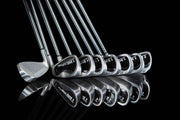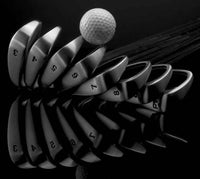Practice Makes Perfect
by David Lake
I receive many emails inquiring as to the best approach to improving performance on the golf course. Other than a full understanding of the basics involved in a golf swing (grip, address position, swing, etc.) my reply is that there are only three factors to consider:
Unfortunately, most golfers equate practice with simply pounding a bucket of golf balls at the range. This is not practice; it is exercise and only accomplishes the burning of calories - nothing more. True practice entails an analytical approach where each shot, swing, and ball contact are analyzed in the context of your desired results. For instance: if you are trying to improve your swing mechanics you need to analyze each swing you make and then add any minor adjustments required to your next swing. Perhaps you are concentrating on keeping your left arm (right-handed golfer) straight throughout your swing and you notice that your elbow broke slightly at the top of your backswing. On your next swing you would concentrate on keeping the elbow from breaking and then repeating this on the next few swings until it becomes ingrained. At that point you would concentrate upon another swing factor such as not breaking your wrists at the top of the backswing, and again, you would pursue this over the course of the next few swings until it becomes ingrained. So on and so on until you can make a swing where all of the ideal swing factors are in place and ingrained.
I need to empathize here that the previous paragraph only applies to the practice range and not to the golf course. The worst thing that you can possibly do on the golf course is to analyze or even think about your swing. It is impossible to try and develop or think your way through a swing on the course and will definitely lead to disaster. Your only concern on the course should be the pin, and nothing else. When asked what my personal swing thought is on the course my reply is always the same: "Where did I set my can of beer?"
For whatever reason golfers think that every other golfer is watching them when they hit balls at the range. Believe me, this is pure vanity and nothing could be further from the truth. Do you care about any other golfer when you are at the range? In order to actually improve your swing, you will make some very poor shots which is to be expected, but certainly do not worry about your prestige among the other golfers there because, like you, they simply do not care about you or your swing.
When I talk about practice, I do not mean to imply that it is an everyday routine. Perhaps it is for the pros but certainly not for you and me. What I mean is that at the beginning of the season you go to the range three or four times: once or twice to work on your iron play while developing the ideal swing, once with your fairway woods while utilizing the ideal swing you developed, and once with your driver. From that point on you may only need to visit the range once a week or even once every two weeks to keep everything together. A point to consider when going to the range is that you should always practice with your lowest lofted iron and fairway wood. The reason being that any swing flaw you may have will show itself clearly when not hidden by the high backspin imparted by a high lofted club. One of the distinct advantages of playing single-length golf clubs is that you are using the exact same swing with each iron and, therefore, only need to develop and maintain one swing. Personally, when I go to the range, I only take my driver, my #3 wood, and my #3 iron. The beauty of this is that when I have grooved my #3 iron swing, I have effectively grooved my swing with every other iron in the bag.










